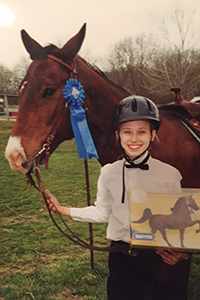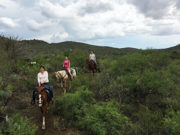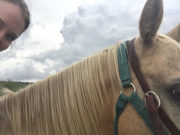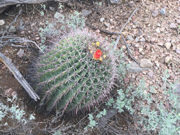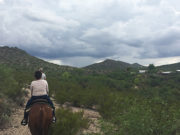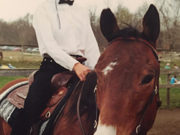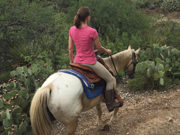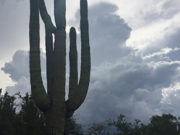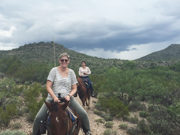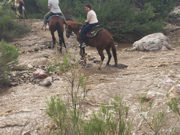Little did my parents know what a ride on a horse more than two decades ago would spark — I became horse crazy. I collected horse figurines and named each one. I penned horse poems in purple ink in a spiral notebook, drew pictures of horses (and gave them each a name too), and read as many horse books as the library had. As time went on, these testaments to my passion for horses were boxed up, and the passions of higher education, my career, marriage and a family took center stage.
Lately, my horse craziness has been begging to come out of the box, and I’ve been indulging it by experiencing Indian Country on horseback while traveling for Travois. It’s been an amazing way to blend my passion and my profession.
My twenty years’ fascination with horses, though, is nothing compared to the centuries-long enchantment Native Americans have had with these beasts. I’ve been back in the library, immersing myself in history with books like “Out of the Saddle” by Gawani Pony Boy and “The Horse and the Plains Indians” by Dorothy Hinshaw Patent.
I’ve learned that upon seeing horses for the first time when the Spaniards arrived in the 1500s, Native Americans described this unknown animal in relation to animals they did know: “sky dogs” or “elk dogs” or even “god dogs.” It didn’t take long for Native Americans to develop a remarkable prowess astride these animals that they came to call them “four legged brothers,” indicating the deep-seated bond between man and animal.
Horses reciprocated by transforming Native American culture, particularly for Plains tribes — hunting buffalo and other large game could now take place on horseback as opposed to on foot. Horses could carry more with a travois and travel quicker and farther than dogs, especially during migrations, and horses became a new way of amassing wealth and status.
Plus, I can imagine that like me, many discovered the pure pleasure, thrill and freedom that can only be experienced atop a horse.
On a recent trip with Travois, I roped my colleagues, Ashley and Alexandria, into joining me on just such a pleasure ride through the Sonoran Desert near Tucson, even with threatening storm clouds typical of Arizona’s monsoon season.
My equine tour guide for this ride was an Appaloosa named PacMan. Known for their signature spots, typically in a blanket pattern over the hindquarters, Appaloosas are named after the Palouse River where they were bred by the Nez Percé. Coincidentally, the horse I had growing up was an Appaloosa!
After waiting for a short rain shower to stop, we saddled up and were off! The canyon walls and hills were their own rainbow of reds, purples, greens and tans — much more color in the desert than I ever would have imagined.
The recent showers brought out the fragrant aroma of the greasewood and the coral-hued buds of the barrel cactus (which I also learned lean toward the south to avoid scorching mid-day temperatures). The rain caused the stream to swell to what felt like a raging river; both humans and horses felt trepidation at crossing the churning water. Mother Nature graciously held her next downpour until we had our boots back on the ground.
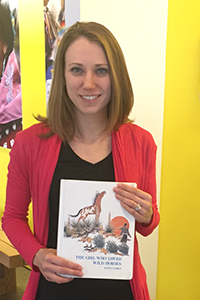
Back in the library aisles scouring for more horse books, I found the captivating tale of a girl and a spotted stallion, presumably an Appaloosa, in Paul Goble’s Caldecott Medal-winning book, “The Girl Who Loved Wild Horses.” Goble is an author and illustrator with roots in South Dakota’s Black Hills who is renowned for his vibrantly colored depictions of Native American myths and lore. While I won’t give away the ending to the book, the story tells of a young girl caught between a life with her people and a life with the wild horses she adored. As a fellow horse-crazy girl, I can relate, but I can thankfully live both lives simultaneously.
Stay tuned for more Hoof Beats blog segments as I travel Indian Country on horseback!


